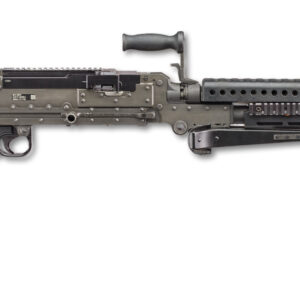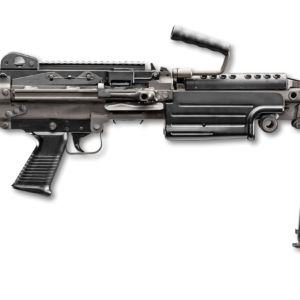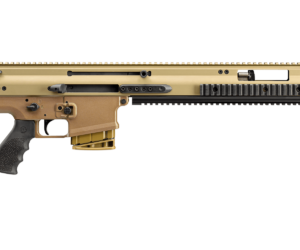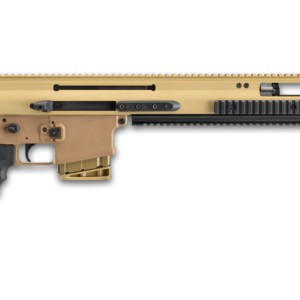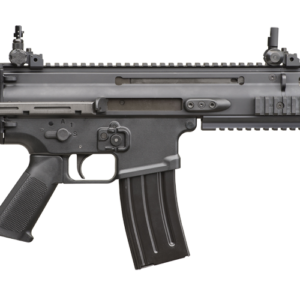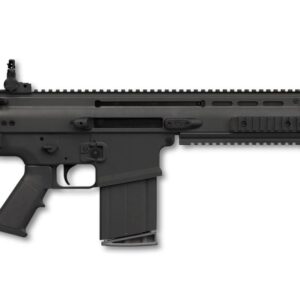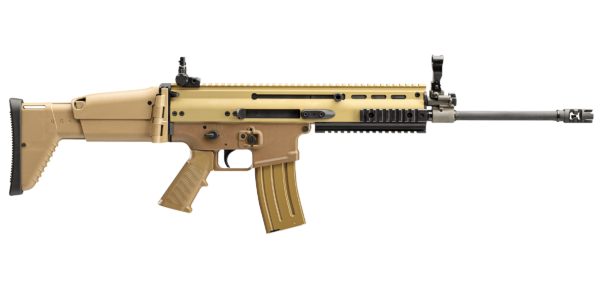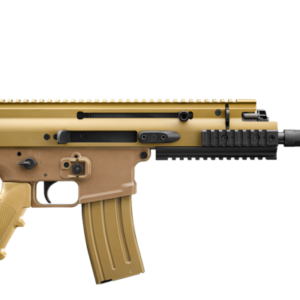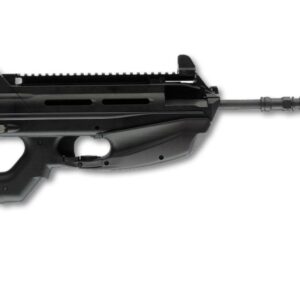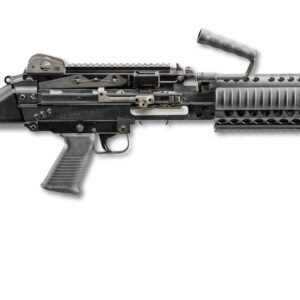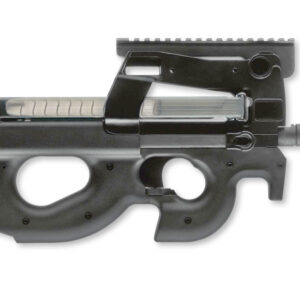In the world of firearms, the comparison between the 338 mag vs 300 mag is a fundamental debate among shooting enthusiasts and professionals.
Understanding the nuanced differences in impact, accuracy, and overall performance between these two formidable calibers is essential to making informed decisions in various shooting applications.
The 338 mag vs 300 mag represent two distinct categories of high-powered ammunition, each with their unique characteristics and capabilities.
In this article, we delve into a comprehensive analysis of these calibers, exploring their respective strengths and limitations in different shooting scenarios.
Join us as we embark on a thorough exploration of the impact, accuracy and performance of the .338 Magnum versus the .300 Magnum, shedding light on the complexities that define these revered cartridges in the realm of modern firearms.
Introduction of 338 Mag
The .338 Magnum (338 Mag) is a powerhouse within the realm of rifle cartridges, recognized for Glock 29 Gen4 formidable ballistic performance and versatility in various shooting disciplines.
Here, we delve into the intricacies of the 338 Mag, offering insights into its origins, specifications, applications, and notable features that contribute to its impact, accuracy, and overall performance.
Introduction of 300 Mag
The .300 Magnum (300 Mag) is a revered member of the Magnum family, renowned for its exceptional ballistic characteristics and widespread popularity among hunters, long-range shooters, and tactical professionals.
In this Reloading The 9mm Minor section, we explore the nuances of the 300 Mag, offering information on its historical background, technical specifications, applications, and distinctive attributes that contribute to its impact, accuracy, and overall performance.
Accuracy Comparison

When comparing the accuracy of the .338 Magnum (338 Mag) and the .300 Magnum (300 Mag), several factors come into play, including inherent ballistics, shooter proficiency, and environmental conditions.
In this section, we discuss the precision nuances of both calibers, highlighting their respective strengths and considerations.
Factors Affecting Accuracy in 338 Mag
Bullet Stability: The 338 Mag typically uses heavy bullets with high BC content, which tend to offer greater stability and resistance to wind drift, improving long-range accuracy.
Barrel Harmonics: Rifle barrel harmonics, influenced by factors such as barrel length, twist rate, and manufacturing quality, significantly impact the consistency and accuracy of shots fired with the 338 Mag.
Optics and Sighting Systems: The choice of optics, including scopes and sighting accessories, plays a crucial role in maximizing the inherent accuracy potential of the 338 Mag, allowing shooters to accurately acquire and engage targets at different ranges. Distances.
Ammunition Quality: Selecting high-quality ammunition tailored to the rifle’s specific characteristics and intended shooting application is critical to achieving optimal accuracy with the 338 Mag.
Factors Affecting Accuracy at 300 Mag
Bullet Stability: Similar to the 338 Mag, the 300 Mag benefits from heavy, high BC bullets that offer superior stability and trajectory consistency, contributing to greater accuracy, especially at extended ranges.
Barrel Harmonics: Rifle barrel harmonics, as in the case of the 338 Mag, have a significant influence on the accuracy and repeatability of shots fired with the 300 Mag, underscoring the importance of barrel quality and consistency.
Optics and Sighting Systems: Choosing optics and sighting systems tailored to the specific characteristics and intended use of the 300 Mag rifle is essential to maximizing accuracy potential and achieving reliable shot placement under different shooting conditions.
Ammunition Quality: As with the 338 Mag, selecting high-quality ammunition optimized for the 300 Mag rifle’s performance specifications and shooting requirements Glock 20 Gen4 is critical to achieving consistent accuracy and reliable terminal ballistics.
In short, both the 300 wm vs 338 wm offer impressive accuracy potential when combined with the proper rifle setup, quality ammunition, and shooter skill.
While nuances in ballistics and recoil characteristics may influence shooter preference, both calibers are capable of delivering exceptional accuracy across a spectrum of shooting disciplines, underscoring their reputation as formidable options for precision shooting and close-quarters engagements. Long-range.
Performance comparison

Comparing the performance of the 300 win vs 338 win involves evaluating several aspects, including ballistic capabilities, terminal effectiveness, and suitability for different shooting scenarios. In this section, we delve into the performance attributes of both calibers, highlighting their strengths and considerations.
Long-Range Shooting Performance for 338 Mag
Ballistic Performance: The 338 Mag excels in long-range shooting because it can propel heavy, high-BC bullets at impressive velocities, minimizing trajectory drop and wind drift.
Terminal Effectiveness: The 338 Mag’s significant energy retention and penetration capabilities make PPU M1 Garand Ammo well-suited for engaging targets at extended ranges with confidence, particularly in scenarios involving big game or tactical applications.
Recoil Management: While the 338 Mag generates significant recoil, proper rifle setup, including muzzle devices and recoil mitigation systems, can help manage recoil and maintain shooter comfort during extended shooting sessions.
Long-Range Shooting Performance for 300 Mag
Ballistic Performance: The 300 Mag features excellent long-range performance, characterized by flat trajectories and high-velocity retention, allowing for precise shot placement at extended distances.
Terminal Effectiveness: With 300 win mag vs 308 combination of bullet velocity and weight, the 300 Mag offers formidable terminal ballistics, ensuring reliable penetration and energy transfer for both hunting and target shooting applications.
Recoil Management: While the 300 Mag exhibits moderate recoil compared to the 338 Mag, shooters can still benefit from recoil-reducing accessories and proper shooting techniques to improve control and follow-up shooting ability.
Comparative Analysis of Performance
Hunting: Both the 338 vs 300 win mag are highly effective for hunting a variety of game species, offering sufficient power and accuracy for ethical and humane kills at moderate to long ranges.
Precision Shooting: In precision shooting competitions or tactical scenarios, the choice between the 338 Mag and the 300 Mag often comes down to personal preference, shooter experience, and specific match requirements.
Environmental Considerations: Factors such as wind, temperature and altitude can influence the performance of both calibers, highlighting the importance of shooter mastery and environmental awareness to achieve consistent results.
In conclusion, the 338 magnum vs 300 win mag demonstrate exemplary performance characteristics across a spectrum of shooting applications, with each caliber offering unique advantages and considerations based on shooter preferences and intended use.
Understanding the nuanced differences in ballistic performance, terminal effectiveness, and recoil management is essential to selecting the optimal caliber to meet individual shooting requirements and achieve desired performance results.
Recoil and Handling
Recoil and handling are critical considerations when comparing the .338 Magnum (338 Mag) and .300 Magnum (300 Mag) rifle calibers.
The 338 Mag is known for its substantial recoil due to its large caliber and high muzzle energy, potentially resulting in pronounced muzzle rise and shooter discomfort.
Proper firearm ergonomics and recoil-reducing accessories can help control recoil and improve handling with the 338 Mag. Similarly, the 300 Mag generates moderate to strong recoil, requiring shooters to Employ proper shooting techniques and recoil mitigation strategies to improve control and accuracy.
Both calibers benefit from ergonomic rifle designs, recoil-absorbing stocks and muzzle devices to mitigate the effects of recoil and optimize handling comfort.
Shooter proficiency and familiarity with recoil characteristics are essential to maintaining consistent shot placement and maximizing shooting performance with any caliber.
By addressing recoil and handling considerations, shooters can improve their shooting experience and achieve optimal results in various shooting applications.
Availability and Cost
Examining availability and cost considerations for the .338 Magnum (338 Mag) and .300 Magnum (300 Mag) involves evaluating factors such as ammunition availability, firearm options, and associated costs for both calibers.
In this section, we explore the availability and cost implications of adopting the 338 Mag or 300 Mag for shooting enthusiasts and professionals.
Availability of Ammunition and Firearms for 338 Mag
Ammunition Availability: While the .338 Magnum is widely popular among hunters and long-range shooters, its ammunition availability may vary depending on place and demand. Major ammunition manufacturers typically offer a variety of 338 Mag loads, including hunting, target, and match-grade options.
Firearm Options: The availability of rifles chambered in 338 Mag ranges from bolt-action hunting rifles to semi-automatic precision rifles, catering to various shooting preferences and applications.
Cost Considerations: The 338 Mag’s ammunition cost tends to be higher than that of more common calibers due to factors such as cartridge size, bullet weight, and manufacturing complexity. Similarly, rifles chambered in 338 Mag can command premium prices compared to standard hunting rifles or entry-level precision platforms.
Expert opinions and user experiences
Gaining insight from expert opinions and user experiences is invaluable when comparing .338 Magnum (338 Mag) and .300 Magnum (300 Mag) rifle calibers.
Firearms experts provide detailed evaluations of ballistic performance, accuracy, and suitability for specific applications, helping shooters make informed decisions.
User experiences provide first-hand insight into practical performance, including recoil management, accuracy at different ranges, and overall satisfaction with each caliber.
By synthesizing expert knowledge and user testimonials, shooters gain a comprehensive understanding of the strengths, limitations, and practical considerations associated with the 338 Mag and 300 Mag.
These diverse perspectives allow shooters to align caliber choices. Your individual preferences, shooting goals, and performance expectations ultimately improve your shooting experience and success on the range or in the range.
Cost-Benefit analysis
Shooters considering the 338 Mag or 300 Mag should conduct a thorough cost-benefit analysis, weighing factors such as ammunition availability, cost of the rifle, and ongoing maintenance expenses against their shooting requirements and budget constraints.
While the initial investment in firearms and ammunition for the 338 Mag may be higher, shooters may find the added performance benefits and versatility worth it, particularly for long-range and big-game shooting applications.
In contrast, the 300 Mag offers a more affordable alternative without compromising performance or versatility. Making it a popular choice among shooters looking for a balance between cost-effectiveness and firepower.
In conclusion, .338 Magnum and .300 Magnum availability and cost considerations encompass a variety of factors that influence a shooter’s decision-making and long-term investment.
By carefully evaluating ammunition availability, firearm options, and associated costs, shooters can make informed decisions that align with their shooting preferences, budget constraints, and performance expectations.
Conclusion
The comparison between the .338 Magnum (338 Mag) and the .300 Magnum (300 Mag) underscores the nuanced differences and complementary strengths of these formidable rifle calibers.
Throughout this analysis, we have explored various facets of impact, accuracy, performance, recoil, availability, and user experiences, providing shooters with a comprehensive understanding of the considerations involved in selecting the optimal caliber for their shooting needs.
Both the 300 win mag vs 338 win mag exemplify exceptional ballistic performance, long-range capabilities, and terminal effectiveness. Making them preferred choices among hunters, precision shooters, and tactical professionals around the world.
From the rugged field to the precision rifle range, these calibers offer shooters the power, precision and versatility needed to excel in various shooting disciplines and scenarios.
While the 338 Mag boasts unparalleled stopping power and penetration capabilities, the 300 Mag offers a balanced combination of trajectory, accuracy, and manageable recoil.
Shooter preferences, intended applications, and budget considerations play a key role in determining the ideal caliber choice, and each caliber offers unique advantages tailored to specific shooting requirements.


